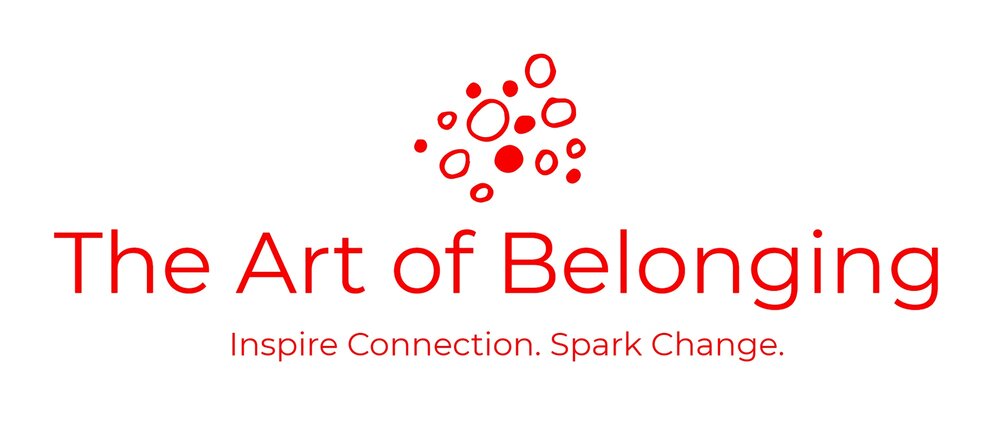I am interested in all sorts of art. From 18th century printmaking to Pop Art to contemporary conceptual sculpture. I like learning about it, making it, and discussing it. I relish the creative process and I believe it to be an innate part of the human experience. But even though art and expression are, in my opinion, a universal need, it is often difficult to access. It costs money to make art, buy art, and look at it. It’s often relegated to the upper class and bourgeoisie. While I am interested in the entire spectrum of artistic pursuits, there is one particular type of art practice that brings meaning to the conversation for me in a different way. That artform is called Participatory art and it is the underlying principle of my work with Art of Belonging.
So what is Participatory art? Wikepedia defines it in this way:
Participatory art is an approach to making art which engages public participation in the creative process, letting them become co-authors, editors, and observers of the work. This type of art is incomplete without viewers' physical interaction. It intends to challenge the dominant form of making art in the West, in which a small class of professional artists make the art while the public takes on the role of passive observer or consumer, i.e., buying the work of the professionals in the marketplace.
My curiosity piques when we take art out of the galleries and move it on to the street, into schools, and communities. What happens when we ask people to be co-creators and give their input around artmaking? For one, it makes art much more accessible. It takes artists off of a pedestal and invites expression from a larger audience. It might change the conversation. An artist coming into a community to create does not know the whole story in a place. It balances an artist’s aesthetic with a community’s needs and desires. It gives context to a piece that may otherwise just show up somewhere. But it also asks people to become active creators of their environments. It engages folks in a way that invites people to explore their own sense of citizenship. It gives a voice to those who are often marginalized. It asks people to be owners and participants of community rather than spectators.
There are lots of ways to invite participation from citizens. The tactical urbanism build I am working on with Street Tweaks is a Participatory Art Project. Street Tweaks has done several tactical urbanism projects around Asheville. The idea behind tactical urbanism is to create pedestrian and bike friendly spaces in areas where it is lacking. The Westwood-Waynesville Project was designed to garner community input. I had the honor of designing the aesthetics of the intersection. But participation was key here. We asked the neighbors what they felt, saw, heard, and observed in this intersection. We asked them what this place means to them. The resulting design incorporates images of blue bottles, birds, and flowers, of a once beloved art park, Christopher’s Garden, adjacent to the intersection. I am excited to be installing this design with the help of neighbors and volunteers. We hope to be painting this towards the end of May so stay tuned for details and check here for updates. The Westwood-Waynesville project is an excellent example of participatory art because it asks neighbors to actively collaborate in enhancing their neighborhood.
And what does Participatory art accomplish on a macro level? According to sociologist Peter Block, “Communal transformation, taking back our collective projections, occurs when people get connected to those who were previously strangers, and when we invite people into conversations that ask them to act as creators or owners of community.” We are starting small here - with an intersection, but imagine the collective change we can cultivate when we invite more people to the conversation.

